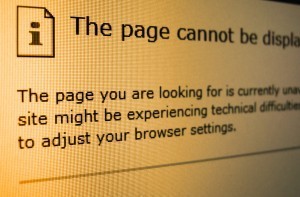Jacob S Paulsen's Blog, page 17
August 2, 2013
Global Content Blocks: Embedding HTML, Iframes, PHP, or Scripts into WordPress
 I have always been a huge advocate for WordPress. Today I want to add another WordPress Tutorial by discussing issues with embedding advanced code into WordPress pages and posts. Have you ever copied a string of code from another site or tool and tried to paste it into the “text” editor of your WordPress page or post only to find that it refused to render correctly on the front end? When you toggle between Visual or Text editor mode the code is someone mysteriously modified? I know the feeling.
I have always been a huge advocate for WordPress. Today I want to add another WordPress Tutorial by discussing issues with embedding advanced code into WordPress pages and posts. Have you ever copied a string of code from another site or tool and tried to paste it into the “text” editor of your WordPress page or post only to find that it refused to render correctly on the front end? When you toggle between Visual or Text editor mode the code is someone mysteriously modified? I know the feeling.
Let me introduce you to a great no-cost WordPress plugin that solves these issues and facilitates the inserting of specific forms or other frames into multiple places on your website.
Global Content Blocks (VIDEO AT BOTTOM OF POST)
This plugin allows you to create “blocks” of code within the plugin management area that can then later be inserted into any page or plugin. You can create an unlimited number of “blocks” within the plugin dashboard and save them with a title that makes them easier to find later.
How Do I Use This?
If you have a string of code that you suspect (or have found) won’t render properly with the WordPress text editor then you first need to install the plugin. Do a search via the plugin add screen for “global content blocks” and find the plugin developed by Ben Magrill. After you install and activate the plugin you can find the settings page/management for the plugin under the Settings menu.
Click on “Add Content Block” and give your piece of content a title. The description is optional but could be helpful if you are going to be adding a lot of content blocks in the future. Select the type of code you will be inserting: HTML, Iframe, PHP, etc and then insert the code below in the text editor. You can of course still use the visual editor if you want to add ancillary images or text around your code block. Click save and your code block is saved.
Open the page/post to which you want to add the code block and click the “Global Content Blocks” button shown in the visual editor menu. It looks like three different blocks stacked on each other (red, blue, green). When you click on the button it will open a popup window from which you can select the block of code you want to insert. BAM, that’s it!
What Are The Applications?
YouTube videos have always been difficult to embed in WordPress content. Now with the recent change to iframes to embed Youtube videos, it becomes critical to use a plugin like this to embed videos or playlists from Youtube in WordPress.
Your Email Marketing software likely provides you a HTML code to embed your subscription forms on your site. Often those code strings are broken in WordPress. This type of plugin solves that issue and makes it easy to add/remove the subscription form wherever you need it.
Often when you are doing custom work with WordPress you need to embed PHP code in the middle of a page or post. That cannot be done without a plugin like this one to keep the code intact.
While this is probably not the best solution, some people use this plugin to insert Adsense code or other ad code into the middle of pages and posts.
Here is the Tutorial Video
In Summary, I don’t know that many people who work with WordPress who don’t have a need for a plugin like this one. It could solve a lot of your frustrations and issues!






July 19, 2013
Start With Why by Simon Sinek
In June of this year I read Start With Why by Simon Sinek as part of my online business book group. It has been awhile since I read a book that drove so many actions in my life. My approach has been better aligned with my values and I’m better communicating in a way that illustrates what I believe and who I am.
 Sinek’s book operates under the premise that everything that a person or organization does should emulate the why. Specifically, why they do it. The book is full of examples of great companies that started with a clear vision of why they were in business and eventually lost their why. Everything suggests that the clear sense of why that drives action effects the bottom line and long term viability of any business or venture.
Sinek’s book operates under the premise that everything that a person or organization does should emulate the why. Specifically, why they do it. The book is full of examples of great companies that started with a clear vision of why they were in business and eventually lost their why. Everything suggests that the clear sense of why that drives action effects the bottom line and long term viability of any business or venture.
I loved his use of examples that we can all understand such as Apple, Walmart, Microsoft, Dell, etc. There are a lot of things that I took from this. For one, I need to remember that my target market (regardless of the venture) consists of those people who share the same why. People who share the same why become natural advocates of the company, service, or product and tend to be connected to others who share the same why. That is how viral marketing happens in principle.
I learned that nobody cares as much about what I do or how I do it as they do about why I do it. As I read through this book I went to the About pages on all of my websites and rewrote them to include a clear transfer of belief instead of the usual this is who we are and what we do. This also lead to significant changes in places like marketing materials and LinkedIn pages and profiles.
I learned that while sometimes strange or awkward I will only create stronger relationships with people and organizations if I ask them WHY. Next time I’m at a marketing event or sitting next to someone on an airplane I will be asking the question, “Why do you do what you do?” So far this simple change in directing conversations has led to amazing experiences.
So let me ask you. Why?
Test Message. If you subscribe to our RSS feed you should see this message. Please disregard.






July 18, 2013
404 Errors: SEO Impacts and How to Fix Them
 Recently I invited a colleague and friend, Matthew Edgar to write a guest post about 404 errors. While very informative, many readers want to better understand the deeper implications that 404 errors have on search engine optimization efforts. With that in mind I asked Matthew to once again prepare an article to be published here on the blog. Here it is:
Recently I invited a colleague and friend, Matthew Edgar to write a guest post about 404 errors. While very informative, many readers want to better understand the deeper implications that 404 errors have on search engine optimization efforts. With that in mind I asked Matthew to once again prepare an article to be published here on the blog. Here it is:
A Deeper Look at 404 Errors
After discussing what 404 errors are and how they impact your website, you might be wondering how this impacts your online marketing efforts. How do Google and Bing treat 404 errors on your site? What if somebody shares a broken link from your website on Facebook, Twitter, or another social network? More importantly, what can you do to avoid those negative impacts?
Loss Of Rankings
The biggest problem with 404s is that 404 errors can cause you to lose rankings within search results. This often happens while making large changes to your website. Let’s say you move your website into WordPress. Your old website had links like yoursite.com/about-my-company.html but your new WordPress website has links like yoursite.com/about-my-company/ (without the .html at the end). A visitor accessing that old link (/about-my-company.html) will arrive at your site’s 404 error page.
If that old link ranked in Google or Bing, you could be at risk of losing that ranking because the old link no longer works. Google and Bing remove 404 error pages from search results because broken pages are bad for people searching. If you lose that ranking, you have to do more work to get the ranking back. While you are waiting to get that ranking back, you could be losing lots of traffic.
Pogosticking & Site Quality
Your site’s 404 errors can also have an indirect impact on your search marketing by decreasing your site’s perceived quality. One way to detect site quality is by watching for a concept known as the short click or pogosticking from search results. The concept means somebody went from a Google search result to a website then almost immediately returned back to Google because that page they first went to was not what the searcher wanted.
If somebody arrives on a 404 page from Google, chances are they will go back to Google and not stay on your website. Google sees pogosticking as a signal, among many others, that your site may not be high enough quality to appear in their search results.
Inbound Links & Lost Social Shares
Websites that contain lots of errors, including 404 errors, will be shared less. Would you share an error-ridden website with your friends on Facebook? Most people tend to only share high-quality websites. The same is true of bloggers, journalists, and other web managers; people who run websites don’t want to share an error-ridden website with their readers.
Google and Bing look at different ways your site is shared to determine what sites ought to be ranked in their search results. This includes how many other sites link to your website but increasingly, it also includes how often your site is shared on social networks. If your site isn’t being shared because people think your site is poorer quality, your site will probably rank lower and you’ll get less traffic from Google and Bing.
Monitoring & Prevention
The best way to prevent problems resulting from 404 errors is to closely monitor your website’s 404 activity. Are lots of people encountering a broken link on your site? Are people encountering those 404s after conducting a search on Google or Bing? The sooner you know about the problem, the sooner you can fix the 404 error.
The best way to fix a 404 error is to redirect that broken link to a working link on your website. Redirects are defined on the server powering your website and instruct your server to route people arriving at a broken link, such as yoursite.com/about-my-company.html, to a non-broken link, say yoursite.com/about-my-company.
These redirects tell Google or Bing that the link still works, but moved somewhere new. Google and Bing update the link in their search results and you avoid losing rankings. Plus, by adding redirects, users won’t encounter 404 errors and will instead be routed to a working page. This helps you avoid a perception that your site is error-ridden and the consequences that come from being perceived as a low-quality site.
Matthew Edgar is the founder of broken link monitoring tool SpringTrax, which helps web managers find and fix every 404 error on their site
.






July 8, 2013
Understanding 404 Errors On The Web 101
Have you ever encountered a 404 page while out browsing the web? I reached out to colleague Matthew Edgar here in Denver who helps people find and correct 404 errors on their sites. He has prepared the following short tutorial about 404 errors.
If you are like most people, you have, at least on occasion. You click on a link—maybe in a Google search result or maybe a link a friend shared on Facebook—and instead of the page you were hoping to see, you get an error message telling you that page could not be found. What exactly is that 404 error message and why are you seeing it instead of the page you wanted?
What Exactly Is That 404 Error Message?

To understand a 404 error it helps to think of the web as a collection of addresses, with addresses represented by URLs. A URL is a specific address for a particular file somewhere on the web. That file might be a page, an image, or a video. Encountering a 404 error means that a website doesn’t have any file located at that URL.
When the website couldn’t find a file to associate with that URL, the website instead returned an error message indicating nothing was found. The numbers “4-0-4” comes are the numerical signal the website sends to indicate nothing was found.
Why Are You Seeing The 404 Error?
While you can arrive at the 404 error page on a site for any number of reasons, there are two common reasons why you will typically encounter that 404 not found error page:
1. The URL may be typed incorrectly. Maybe a friend copied and pasted the URL wrong before sharing the link. Maybe a blog encoded a link in their text incorrectly and, as a result, sent their readers to a 404 error page. Or, maybe you typed in the URL yourself and left off a letter.
2. Another reason people find 404 errors is because the website you are looking at recently removed pages from their site or moved those pages to a new URL. Other websites, social networks, and search engines, might not know about that change and are still sending you, and others, to the old URL.
What Does This Mean For My Site?
If you run a website, you are probably wondering what this means for you. Because visitors can encounter 404 errors on any site, some of your visitors are probably encountering 404 errors on your site. The more visitors you have and the more pages you have, the better the chances of your visitors encountering 404 errors on your site.
The real problem with 404 errors is that those errors can cause you to lose visitors. Around 65% of people who reach a 404 error page leave that website altogether. If just 3 people encounter a 404 error on your site each day, you could be losing about 60 visitors every month due to your site’s 404 not found error pages.
Ultimately, the only way to know how 404 errors affect people visiting your website is to monitor what 404 errors your visitors encounter. If you know how people reached that 404 page—from a search result, another website, a social network, or somewhere else on the web—you can correct those 404s to keep your website clean and error-free.
Matthew Edgar is the founder of 404 Manager and Monitor SpringTrax, which helps web managers find and fix every 404 error that visitors encounter on their site.






Eliminating the Common Cold From Life
 In 2012 I was sick far too often. I was unable to keep an exact count but I know I went to the doctor for 3 sinus infections. Beyond that there was a lot of downtime from the common cold. Being sick kills productivity. If I had to guess I would say there were 6 to 8 days during the year when I was completely incapacitated and another 10 to 12 days when I was unproductive or partly incapacitated for a total of 2-3 weeks.
In 2012 I was sick far too often. I was unable to keep an exact count but I know I went to the doctor for 3 sinus infections. Beyond that there was a lot of downtime from the common cold. Being sick kills productivity. If I had to guess I would say there were 6 to 8 days during the year when I was completely incapacitated and another 10 to 12 days when I was unproductive or partly incapacitated for a total of 2-3 weeks.
It’s easy to blame the environment. I have two young children, one going to preschool and bringing home all manner of germs. I live in a cold and dry place which lends toward sickness. I exercised less in 2012 than any prior year in the past 15 years. These make for good excuses and certainly the lack of exercise is my own fault. As I entered the new year of 2013 among my various goals was to be more healthy in terms of eliminating down time. In order to have a measurable and easy to define goal I said, “no sick days in 2013.”
The year is half over and so far I haven’t been sick once. I don’t know if I can maintain this perfect streak through the rest of the year but I intend to. The environment hasn’t changed much, I still live in the same place and my children still bring germs home and spread them. I didn’t even exercise much more than before. In June I started running again but from January through May I didn’t exercise at all. Here are the simple changes I implemented that I believe have made the difference.
I take a Multi-vitamin every day. I figure my diet has never been very good and supplementing the things that my body needs most is a simple and easy way of making a big difference.
I drink a cup of orange juice every morning. I keep a gallon at my office and pour myself a cup when I first get in in the morning. The vitamin C goes a long way.
I gargle really well a few times per week with Listerine mouth wash. Since the throat tends to be a starting point for a lot of types of sickness this tends to kill germs and bacteria that start problems. (Some people will think I’m gross for not doing this everyday but hey give me a break.)
I have cut back on late night eating. In the past it was very normal for me to eat a piece of cake or an extra piece of lasagna around 9pm. While I haven’t been perfect I have cut most eating after 8pm out.
Lastly, my wife has been far more aggressive than usual this year about cooking more healthy. As an example she substitutes a lot more whole wheat for the old breads, tortillas, and pastas we used to eat.
That’s it. With zero downtime so far this year as I move into mid-July I am not only more productive because I don’t lose days to sickness but because I feel better. What are the little things you do to stay healthy?






July 4, 2013
July 4th Flag Raising Ceremony at the Paulsen Home
This morning we hosted about 50 people in our front yard at 10am for a flag raising ceremony. We installed our flag pole just a few weeks ago and have been waiting for this awesome holiday to raise our flag for the first time. We passed out invitations to 92 of our neighbors and invited many other local friends. Boy Scout troop 137 from our church came to perform the flag raising.
This was a somber occasion as we all shared in giving honor to the greatest symbol of our country. My wonderful wife prepared muffins and other snacks for all those who came. We are very grateful to all those who took time out of their holiday to spend a little time with our family.
If you weren’t able to attend in person then perhaps you can enjoy the occasion and honor the flag via the pictures? Ok, that might be pushing it but either way next time you are in the Denver area drive by and see our flag!









July 2, 2013
And This Be Our Motto: “In God Is Our Trust.”
Our founding fathers rarely used the word God in their correspondence and rhetoric. Perhaps it was in defiance of England’s close marriage of church to state, but more often our country’s founders could be quoted as referring to divine providence or one’s creator. While these, our American icons disagreed in many counts about the meaning or nature of the American Revolution, they all agreed about the divine providence that made it possible.
Let me share two of the most beloved stories of 1776 that allowed our country to survive and win the Revolutionary War by that divine providence.
In April 1775 a colonial military force (later to be called the continental army) surrounded the city of Boston to lock in the British military garrison encamped there. This 11 month siege was essentially a stand off. The colonials (despite their recent battles at Lexington and Concord) knew they didn’t have a strong chance at removing the army garrison from the city and the British didn’t have the men necessary to break through the lines. The newly appointed leader of the continental army, George Washington, sent a book seller and promising soldier to Fort Ticonderoga to bring whatever cannon and artillery possible to Boston to fortify the position of the army. Henry Knox, by the grace of that divine providence managed to bring over 60 tons of artillery to Boston by horse, dog sled, manpower, and boat across poor roads, two semi-frozen rivers, swamps, and forests in a little less than 3 winter months. Many have called this feat the most impressive logistical feat of the war. With these new cannons in hand Washington organized an effort to distract the British during the night of March 5th 1776 while his men pushed these cannons to the top of Dorchester Heights. During that night they fortified the heights with logs and what else they could find since digging trenches was impossible in the cold of winter. The occupation of Dorchester Heights was the necessary tactical advantage needed to force a British retreat. This miracle was sufficient enough to have caused the British Commander to say, “My God, these fellows have done more work in one night than I could make my army do in three months.”
Later that same year the now super strengthened British army and fleet was in New York facing this same Continental Army. After a defeating battle Washington knew he had to withdraw his troops in a retreat of New York. The newly arrived British fleet threatened to sail up the Hudson and destroy the army where they stood. For over 10 days a strange and unexpected south wind forced the British fleet to remain in the lower bay unable to sail up the river to the side of the island where Washington’s camp lay. Not knowing how much longer this divine providence would shine down on him he planned and executed an amazing over night retreat in which the entire army, supplies, horses, and artillery, were transported across the river on boats while a single unit stayed behind to keep fires lit and make noise sufficient to convince the British that nothing was out of the ordinary. An unusual and heavy fog settled over the island that night making the retreat much more feasible. Almost immediately following that retreat the winds changed and the British sailed up the Hudson.
Some would just call this lucky but like the founding fathers I believe in Divine Providence. I believe that this country was formed and continues to prosper in direct correlation with our obedience to God’s commandments. Most of the founders agreed in the complete separation between church and state but that doesn’t mean they didn’t see a direct correlation in the hand of the almighty and the work they were doing.
The American Gospel is not a specific religion, God, or Deity. The American Gospel is the belief that our creator has given us all unalienable rights, among which are life, liberty, and the pursuit of happiness. The American Gospel is the belief that our country stands as something and for something far greater than our individuals desires and pursuits. It is this Gospel that we carry into battle, that we wave with the American Flag, and that we must emulate in all that we do.
Today when it seems like there is more division than unity among our people we must stay united in the belief of the “American Experiment.” We must all unite behind the symbols and actions that are the core of this rhetoric. Only together can we keep the dream that has become America alive and breathing.
I leave you this July with the final verse of our Nation’s Song: “The Star Spangled Banner.” The story behind this song is equally inspiring but we will leave that for another day.
 Oh! thus be it ever, when freemen shall stand
Oh! thus be it ever, when freemen shall stand
Between their loved home and the war’s desolation!
Blest with victory and peace, may the heav’n rescued land
Praise the Power that hath made and preserved us a nation.
Then conquer we must, when our cause it is just,
And this be our motto: “In God is our trust.”
And the star-spangled banner in triumph shall wave
O’er the land of the free and the home of the brave!






June 25, 2013
Craving by Dr. Omar Manejwala
 I recently finished reading a new book called “Craving, Why We Can’t Seem to Get Enough” by Omar Manejwala. I was really curious about this book and the science behind cravings and addictions.
I recently finished reading a new book called “Craving, Why We Can’t Seem to Get Enough” by Omar Manejwala. I was really curious about this book and the science behind cravings and addictions.
I like the balance in the book between science and self-help. The author makes it clear that cravings are a part of life regardless if you suffer from some of the more common addictions like smoking or drinking or maybe chocolate or internet use.
This book explains the neurological science behind addictions and cravings before talking about the common barriers that prevent control and recovery. As the author gives tips and techniques for recovery I appreciate that he makes it clear that you need to quit or work toward recovery as many times as it takes.
The book ends with some tips specific to the more popular addictions. If you are at all curious about the neurological science of cravings I think this is a great book.






June 17, 2013
New Dad Focused Blog Added to JP2 Blog Network
 (Denver, CO, June 16th, 2013) JP Squared Consulting has announced the launch of RepresentingDads.com; a new blog as part of the JP Squared Blog Network that will provide content in a number of categories designed to help dads everywhere advance in fatherhood. Topics include home maintenance, parenting, family finance, employment and career, physical fitness, and more.
(Denver, CO, June 16th, 2013) JP Squared Consulting has announced the launch of RepresentingDads.com; a new blog as part of the JP Squared Blog Network that will provide content in a number of categories designed to help dads everywhere advance in fatherhood. Topics include home maintenance, parenting, family finance, employment and career, physical fitness, and more.
“In a society where family values are more corruptible and families play a more important role than ever; we are leveraging our resources and business model to make a difference,” says Jacob S Paulsen owner of JP Squared Consulting. “We hope this content will serve to inspire and instruct fathers everywhere.”
Paulsen also reports that friend and business associate Matt Slater is the genesis of the project and is acting as both author and editor to all it’s content. In addition to Slater; visitors to the blog will be encourage to contribute content and subject experts will be invited to contribute on a long term basis.
“I love being a Father and this blog has been an idea of mine for a long time,” says Slater. “I am excited to see it become a reality. Writing has always been a challenge for me but it is rewarding. I know being a Dad is a challenge too. I hope that this blog an be a place for all Dads to share challengees and succcess because there is nothing as rewarding as being a Dad.”
Advertising opportunities will be similar to other blogs in the JP Squared Blog Network and will include in text links, banners, editorial reviews, sponsored tweets, and more.






May 7, 2013
What is Re-Processing and How Is it Slowing You Down Each Day
Recently I had the blessed chance to participate in a conference call with productivity coach and guru Jason Womack. I asked him the question, what is the number one behavior that leads to low productivity among your various clients? His answer was “Reprocessing.”
 Reprocessing is the behavior of processing information more than once. Let me give you an example that I was able to identify in myself right away. During the day I often view emails on my phone. I rarely take the time to reply to emails on my phone. I primarily just check them in case there is something urgent. When I get back in front of the computer I’m essentially reprocessing emails I have already checked once.
Reprocessing is the behavior of processing information more than once. Let me give you an example that I was able to identify in myself right away. During the day I often view emails on my phone. I rarely take the time to reply to emails on my phone. I primarily just check them in case there is something urgent. When I get back in front of the computer I’m essentially reprocessing emails I have already checked once.
How often do you pick up a report or memo in your inbox or on your desk; take a look at it, and then set it aside to review it again later? In fact, you may not want to admit it but there is likely something on your desk that you have looked through several times without taking the inevitable action that is required.
How do we limit reprocessing? I think the answer lies with all the traditional productivity answers. Create digital and physical in-boxes. Set aside time to tackle the high priority projects. Follow the rule of 3Ds; Do it, Delegate it, Delete it.
However you want to think through the elimination process I would recommend we spend a little more time considering our own reprocessing habits and how we might eliminate them one by one. This could easily save 15-30 minutes to high productivity time each day.









